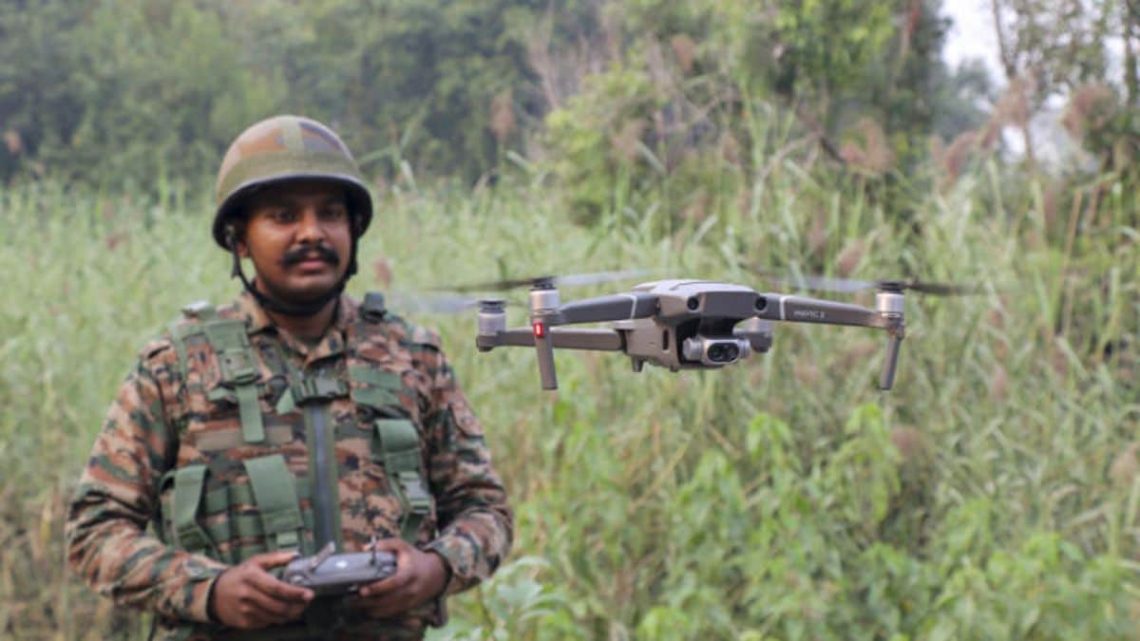Over the past year, Indian Army’s drones procured under the ‘Make in India’ initiative have been hacked in border areas, according to a report.
The news comes at a times when militaries across the world are using drones for intelligence-gathering, reconnaissance, and offensive purposes. Increasingly, the Indian military has also been adopting drones, pressing them into action in border areas for surveillance as well as assisting the ground forces in their operations.
India Today has reported that Indian Army’s drones have been hacked at least twice over the past year — first at the Line of Actual Control (LAC) in eastern Ladakh and then at the Line of Control (LoC).
Sources told the magazine that drones were hacked by exploiting Chinese components in those drones.
In the first case, the drones refused to take off and, in the second case, the drones veered off course and entered Pakistani territory after “people across the border” took control of those drones, a defence official told the magazine.
Even though drones were procured from Indian suppliers, many of their components were sourced from China that rendered them vulnerable to hacking, according to India Today.
China dominates the world’s drone market. Research by the Center for Strategic and International Studies (CSIS) has found that China dominates up to 90 per cent world’s commercial drone supplies. The research found that just one Chinese company, DJI, has a market share of 70 per cent.
The India Today reported Army sources as saying that while the two instances were initially thought to be technical glitches, they turned out to be cases of hacking.
“We were on a procurement spree until the LoC incident exposed our vulnerability when we learnt that our bird was hacked by people operating across the border. It raises questions not only about cybersecurity but also supply chain issues in case of wartime,” a defence official told the magazine.
When the Ministry of Defence (MoD) looked into the matter, it found that several drone-makers relied heavily on Chinese companies for components, as per the magazine.
Such components can be converted into ‘backdoors’ by component-makers that could grant them access to the devices. Through such backdoors, the component-makers cannot just access data generated by drones, such as its flight path or timing of flights, but can also potentially acquire control of the drone. This could convert drones into an intelligence mine for Chinese regime and allow them to disrupt Indian military operations and affect operational readiness.
After vulnerabilities were discovered, Major General CS Mann, the Additional Director General with the Army Design Bureau (ADB), started framing a methodology to block the use of Chinese equipment in the military, according to the magazine, which further reported that once it is finalised, it would be submitted to the MoD and, once approved, it would also be applicable to the Air Force, Navy, and Coast Guard.
Mann told the magazine, “With supply chains heavily reliant on Chinese components, the focus is on finding solutions to eliminate their presence. Various strategies are under deliberation and a comprehensive framework will soon be developed.”
For such a vulnerability plaguing Indian military, Group Captain RK Narang, a drone expert, has blamed the flawed government policy.
India Today has reported Narang as saying that while the Defence Acquisition Procedure-2020 (DAP-2020) mandates that Indigenous Designed, Developed, and Manufactured (IDDM) products with more than 50 per cent indigenous content (IC) be given preference in procurement, loopholes allow assembled products with negligible indigenous content could qualify as IDDM.
The magazine said that Indian manufacturers procure cheap Chinese equipment allegedly through their subsidiaries abroad to skirt around restrictions.
Narang said, “Most Indian UAV manufacturers prefer importing engines, hydro-drive systems, electronics, airframes and other components instead of collaborating with Indian companies to enhance indigenous content. Addressing this issue is crucial to reducing vulnerabilities and minimising unwarranted dependencies.”
Link to article –
Indian Army’s ‘Make in India’ drones hacked in border areas: Report
